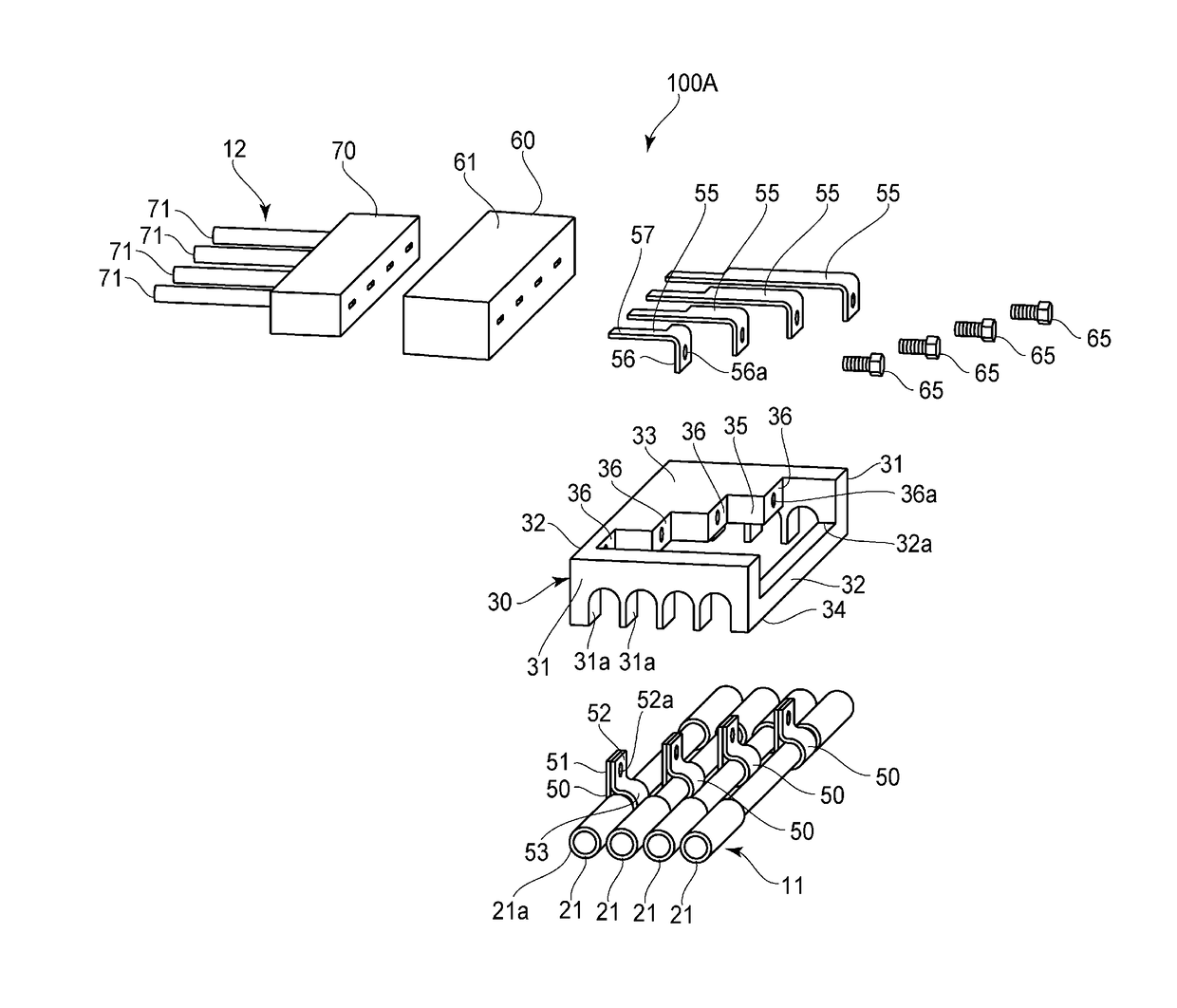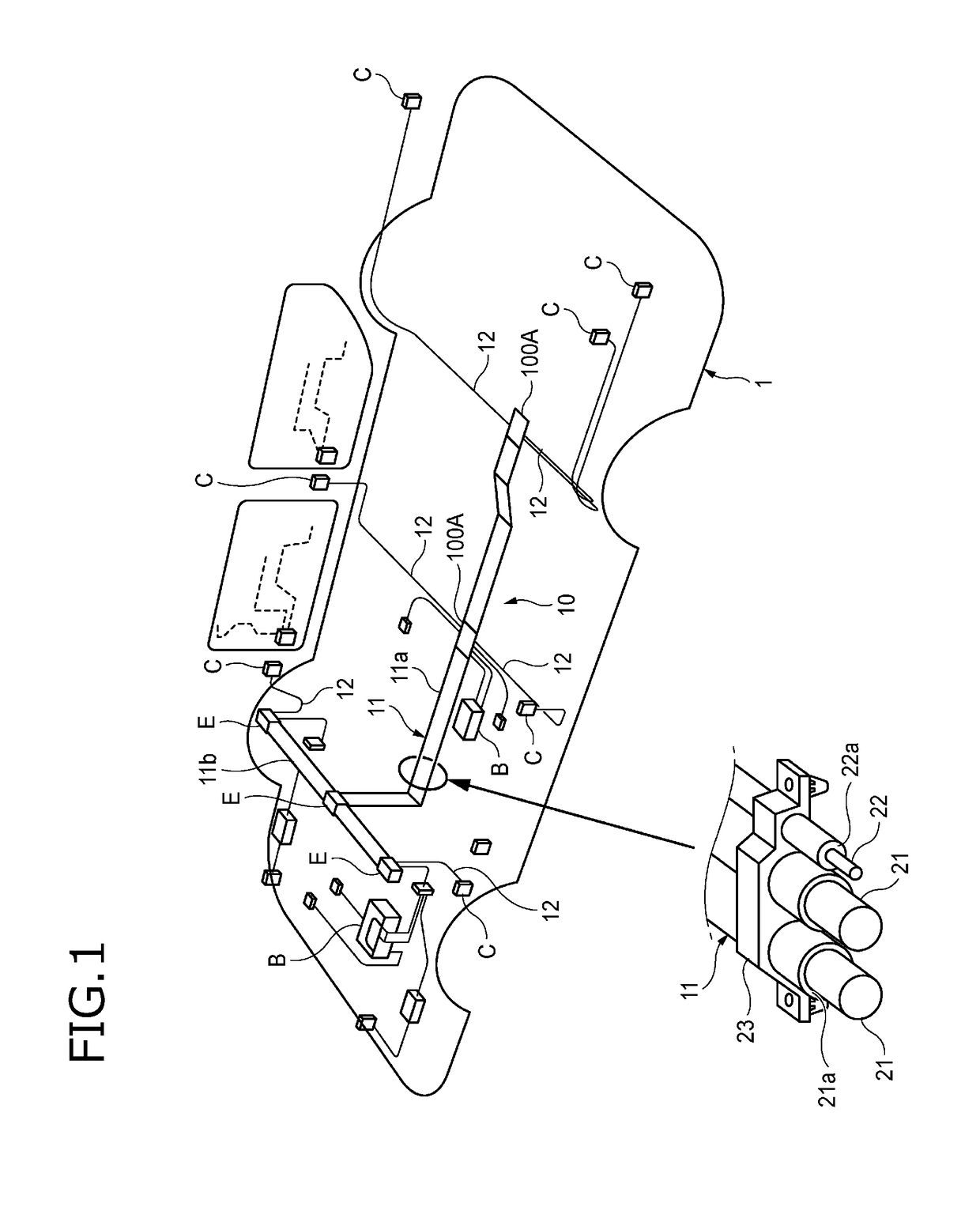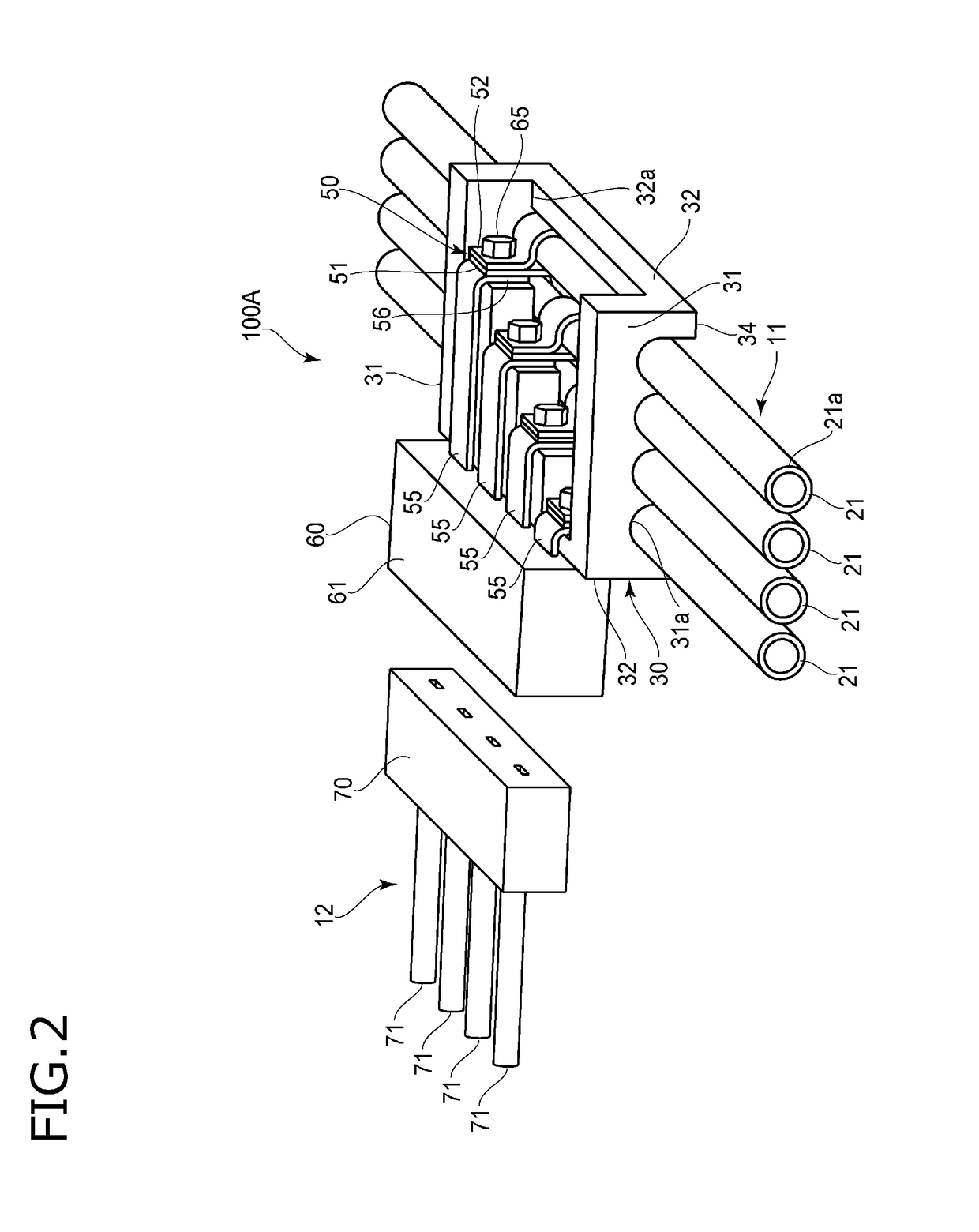Branching structure and wire harness
a branching structure and wire harness technology, applied in the direction of insulated conductors, cables, coupling device connections, etc., can solve the problems of difficult cutting into the single line of rigid wires, lowering the reliability of connection, etc., and achieve the effect of saving the occupied space of the branching mechanism and high connection reliability
- Summary
- Abstract
- Description
- Claims
- Application Information
AI Technical Summary
Benefits of technology
Problems solved by technology
Method used
Image
Examples
first embodiment
[0048]FIG. 2 is a perspective view of a branch box used in a branching structure according to a first embodiment of the present invention. FIG. 3 is an exploded perspective view of the branch box used in the branching structure of the first embodiment. FIG. 4 is a partial cross-sectional view of a connecting portion of the branch box used in the branching structure of the first embodiment.
[0049]As illustrated in FIGS. 2 and 3, the branch box 100A includes a case 30. The case 30 is made of a resin having an insulating property. The case 30 is put on a plurality of (four in the present embodiment) main lines 21 disposed in the main line harness 11. In a portion of the main line harness 11 where the case 30 is put, the cover 21a is removed from each of the main lines 21.
[0050]The case 30 is formed in the shape of a block having end surfaces 31, side surfaces 32, an upper surface 33 and a lower surface 34. The case 30 has a terminal block 35, and base surfaces 36 in the same number as t...
modification 1-1
(Modification 1-1)
[0064]FIG. 5 is a perspective view of a branch box illustrating Modification 1-1. FIG. 6 is an exploded perspective view of the branch box of Modification 1-1.
[0065]As illustrated in FIGS. 5 and 6, the main line harness 11 and the branch harness 12 are connected to each other using a branch box 100B in a branching structure of Modification 1-1.
[0066]The branch box 100B includes a case 30B and connection terminals 50B. In each of the connection terminals 50B, a bus bar 58 is integrally provided at an edge of the fixed end 51. The bus bar 58 extends along the arranging direction of the main lines 21. The bus bar 58 has, at an end thereof, a connection pin 59, and the connection pin 59 protrudes beyond the second side surface 32 of the case 30B. The respective bus bars 58 are formed to have different lengths so that the lengths of the connection pins 59 protruding beyond the side surface 32 can be equivalent. The connection pins 59 of these bus bars 58 are inserted in...
second embodiment
[0071]Next, a second embodiment of the present invention will be described. It is noted that like reference signs are used to refer to like elements used in the first embodiment described above to omit the description.
[0072]FIG. 7 is a perspective view of a branch box used in a branching structure of the second embodiment. FIG. 8 is a cross-sectional view, taken along a routing direction of main lines, of the branch box used in the branching structure of the second embodiment. FIG. 9 is a partially cross-sectional perspective view of the branch box used in the branching structure of the second embodiment. FIG. 10 is a plan view of the branch box used in the branching structure of the second embodiment with a cover thereof removed. FIG. 11 is a perspective view of a main line harness connected using the branching structure of the second embodiment.
[0073]As illustrated in FIGS. 7 to 10, the main line harness 11 and the branch harness 12 are connected to each other using a branch box 2...
PUM
| Property | Measurement | Unit |
|---|---|---|
| current capacity | aaaaa | aaaaa |
| power | aaaaa | aaaaa |
| distance | aaaaa | aaaaa |
Abstract
Description
Claims
Application Information
 Login to View More
Login to View More - R&D
- Intellectual Property
- Life Sciences
- Materials
- Tech Scout
- Unparalleled Data Quality
- Higher Quality Content
- 60% Fewer Hallucinations
Browse by: Latest US Patents, China's latest patents, Technical Efficacy Thesaurus, Application Domain, Technology Topic, Popular Technical Reports.
© 2025 PatSnap. All rights reserved.Legal|Privacy policy|Modern Slavery Act Transparency Statement|Sitemap|About US| Contact US: help@patsnap.com



